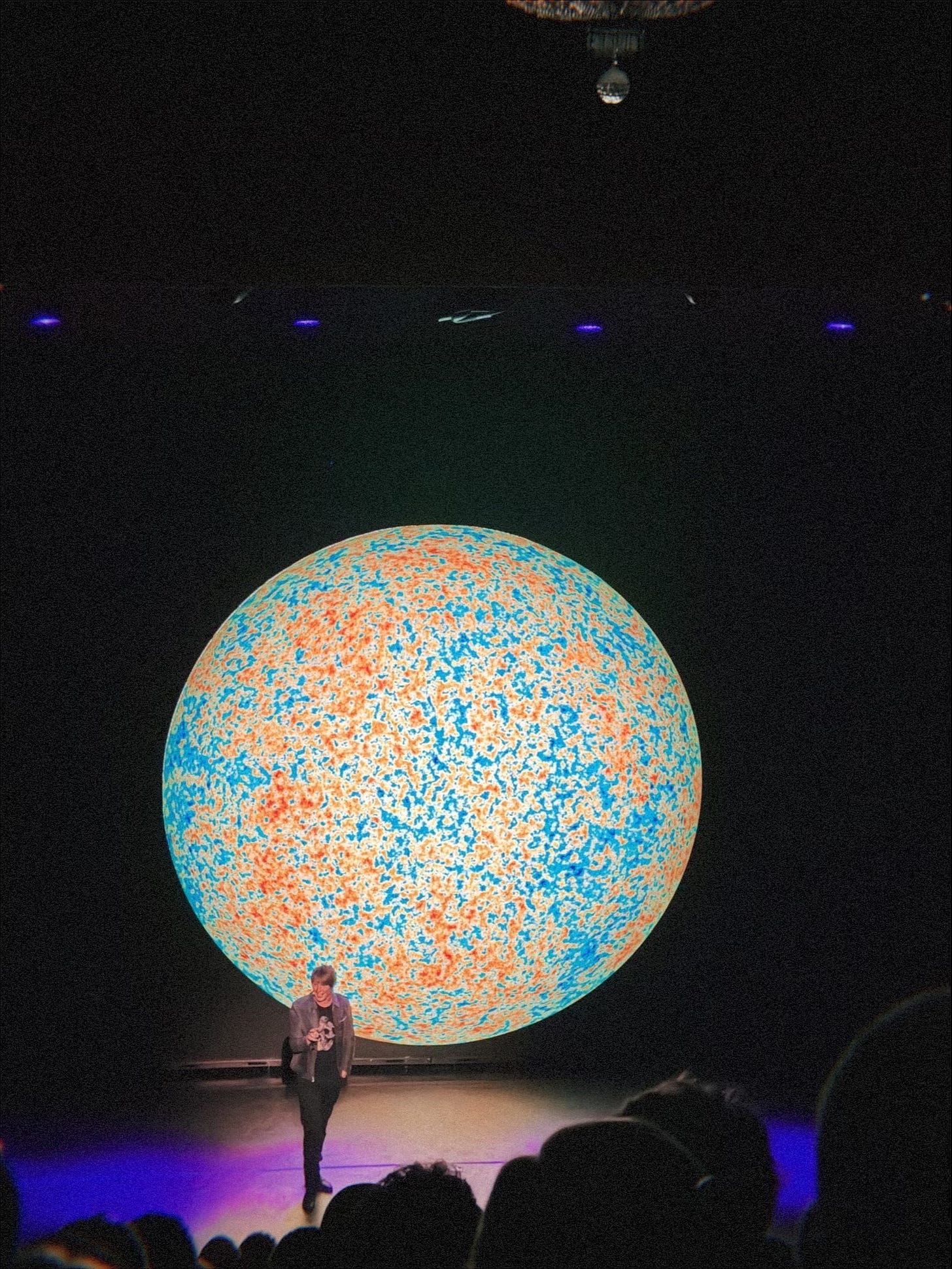It was the second half of the lecture. We found the farthest seats we could. Way in the back of a velvet-dark theater—like two goobers staying up too late to watch a show on the secrets of the universe.
My brother stretched his leg out across the aisle grateful for the extra room. I curled my coat around me like a blanket. Then the lights dimmed, and the cosmos began to speak.
And we…lost it.
Not out loud. But those deep, body-wobbling giggles you can’t contain—the kind that make your shoulders bump into the person next to you saying: if you look directly at me I’m gonna loose it.
Because we were surrounded by grown adults—most of them men, a few with zoned out dates—listening with heartwarming sincerity to a brilliant British Physicist talk about the event horizon of black holes and the Eddington space theory.
And meanwhile, we were two goofballs in the back row, laughing while most of it soared directly over our heads.
The two things I think you’d love to know from this lecture…
ONE:
The Big Bang—the start of everything, the expansion of the observable universe from one impossibly dense particle—was first published in 1931 by a man named Georges Lemaître.
Who, was not just a cosmologist…
but also a Catholic priest.
Let that glitter for a moment.
The father of cosmic expansion also had thoughts on original sin.
And still—this theory? It's accepted by nearly every astronomer alive today.
Because science and faith aren’t always enemies.
Sometimes they’re just two very nerdy friends trying to explain the same beautiful chaos from different sides of the lab table.
And honestly… I kind of love that. That we don’t know.
That maybe we can’t know.
And that being okay with that? That’s where all the best stuff begins.
TWO:
Hearing a room full of very serious, very intellectual humans absolutely chuckle at a well-timed flat-Earth joke might be the closest thing to collective healing I’ve witnessed this year.
Here’s the photo they showed us:
The oldest light.
The residual waves of the universe before it was the universe.
Still shimmering at the edge of what we can even begin to understand.
I KNOW. I know.
The mind boggles. The math breaks. The heart beams. I mean look at the presenters smile.
And just to be clear—I understood maybe 30% of what Brian Cox (the scientist, not the actor, and yes, former keyboardist in a British rock band called Dare) was saying.
But I’ve never felt more present.
More thrilled to have no idea what was going on.
Because the truth is: bliss doesn’t always need answers.
Sometimes all it needs is a little curiosity, a dark theater, and someone to laugh with when space-time becomes too much. To linear.
We live in a Goldilocks Universe.
Not too hot. Not too cold.
Not too structured. Not too chaotic.
Just balanced enough for silly humans like us to exist.
You and me. It’s crazy. It’s a miracle.
And every once in a while, I remember:
If this is the result of infinite cosmic collisions…
Maybe I don’t need to see where it’s all headed.
I just need to keep moving toward what shimmers.
To try the random idea.
To take the weird invite.
To look up at the way light catches the edge of a leaf.
To laugh harder. To risk more.
To trust that the best moments are often the ones you don’t understand until later. And maybe go back to.
Because like the priest who looked at both God and galaxies and said, why not both?—
maybe the whole point is to just live.
To let wonder crack you open.
To love that you’ll never fully understand.
And if you’re lucky, someone or groups of everyones, are out there waiting to laugh with you in the back row—
even when you don’t get the joke.





